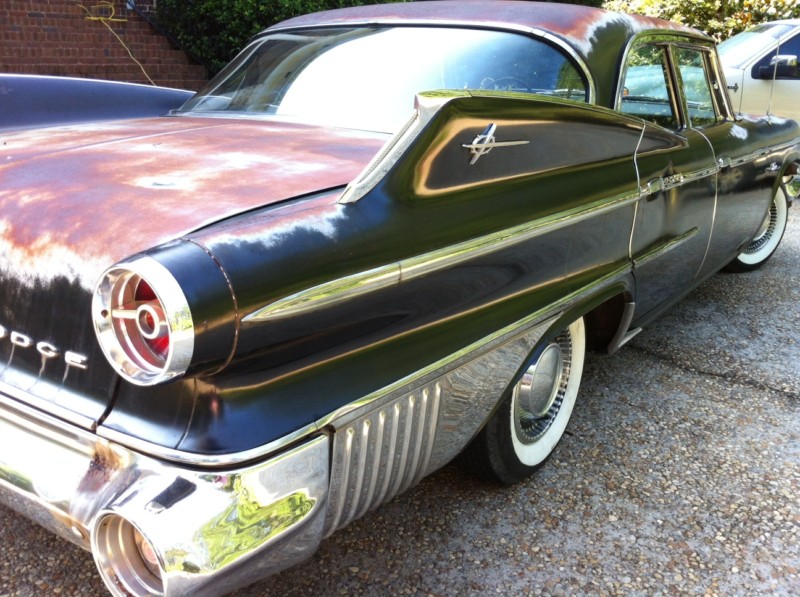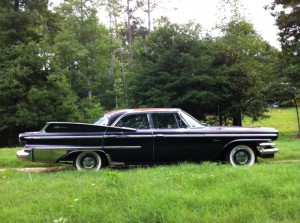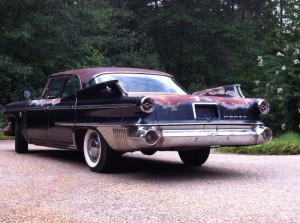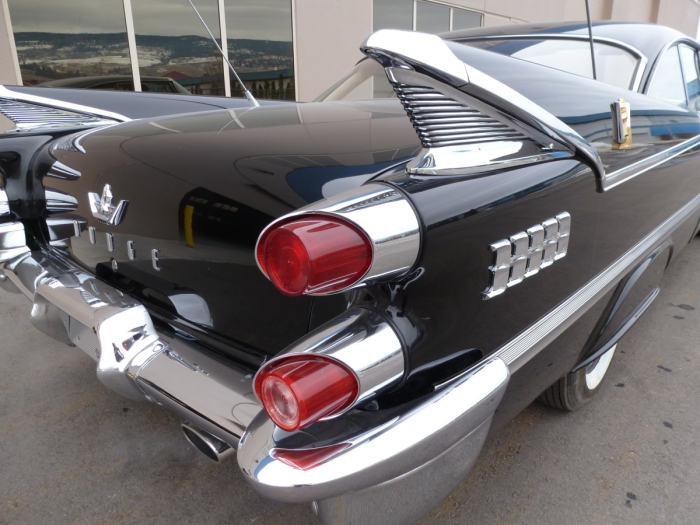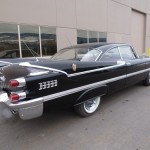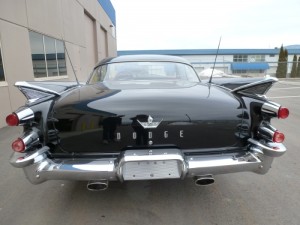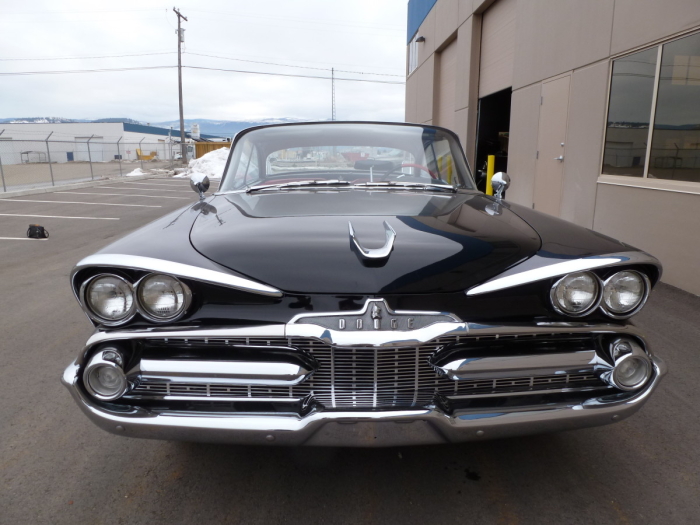
I found this 1950 Dodge Coronet on ebay. My girlfriend and I almost instantly fell in love with it. It ended up being a short abusive relationship.
We drove up to look at it in the dark, and spent about an hour looking the car over & taking it for a test drive each, all the time rationalizing at top speed. The seller made a big deal of the rebuilt engine, all new brakes and repaired & rust-free floors. So we told ourselves since those were all good we’d have a car we could drive while we dealt with the “minor” issues of the unpainted hood, tattered interior, shoddy wiring, rust on the trunk panel… you get the picture.
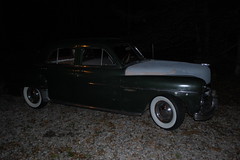
After looking it over we headed home to wait for the auction to end. In the end I was the high bidder at $1830, but it didn’t hit reserve. He sent me a second chance offer for $2300 which after some hemming & hawing I accepted. We drove down after work the next day and brought the car home. Taking another closer look when we got home the car looked rougher than I’d remembered, but I was still enthusiastic about it.

The next morning I decided I was going to take it to work, I headed out a bit early started her up and chugged off to work as usual. My commute is mostly back roads with a brief 3-mile highway section in the middle. On that highway section the Dodge felt a bit down on power, but I didn’t think much of it .However as I came off the exit ramp the car’s brakes seemed a bid spongy, and it stalled when I came to a stop. I started it back up, but it was running very roughly. The gas tank was nearly empty so thinking maybe it was getting crud from the tank, I pulled into a gas station and fueled up. It took a few tries to start it again, and still wasn’t running well. Trying to pull out of the lot, I hit the gas and the engine died. I frantically hit the brakes before rolling into traffic, only to have the pedal go to the floor. A short but exciting trip into a flowerbed and the car was stopped.
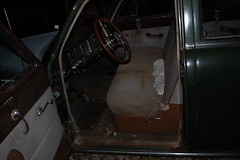 After getting car started enough to move it out of the way, I called work to say I wouldn’t be in that day, & called AAA. While waiting two hours for a truck I poked around under the hood but found nothing obviously wrong with the motor. However after borrowing a wrench from a Desoto mechanic who happened to be passing by, I discovered the brake reservoir was completely dry. While making that unpleasant discovery I made another, most of the driver’s side floorboard was rotted out(something he’d specifically said he’d fixed). I left a series of increasingly upset messages on the seller’s phone.
After getting car started enough to move it out of the way, I called work to say I wouldn’t be in that day, & called AAA. While waiting two hours for a truck I poked around under the hood but found nothing obviously wrong with the motor. However after borrowing a wrench from a Desoto mechanic who happened to be passing by, I discovered the brake reservoir was completely dry. While making that unpleasant discovery I made another, most of the driver’s side floorboard was rotted out(something he’d specifically said he’d fixed). I left a series of increasingly upset messages on the seller’s phone.
 Too keep from making a long story any longer, I was able to convince him that the car he had advertised bore no resemblance to the car he had sold me and he agreed to take it back and refund me my money. In the end I ended up out about $100 in various small expenses and a day of work.
Too keep from making a long story any longer, I was able to convince him that the car he had advertised bore no resemblance to the car he had sold me and he agreed to take it back and refund me my money. In the end I ended up out about $100 in various small expenses and a day of work.
However it was a a bit of a wake up call. I’m very prone to buying with my heart and not my head when it comes to cars. I’ve got a long string of terrible cars as a testament to that. So the one good thing to come out of this car is that it made me much more aware of that tendancy in me, and so I’ve been a lot more careful about the cars I look at. Whatever car I do end up buying, I’m still going to be deciding with my heart. After all classic cars are an inherently irrational choice, why buy something decades old and hopelessly outdated & unreliable when compared against a newer car? However now my head is going to also be involved a bit more heavily in the decision.

